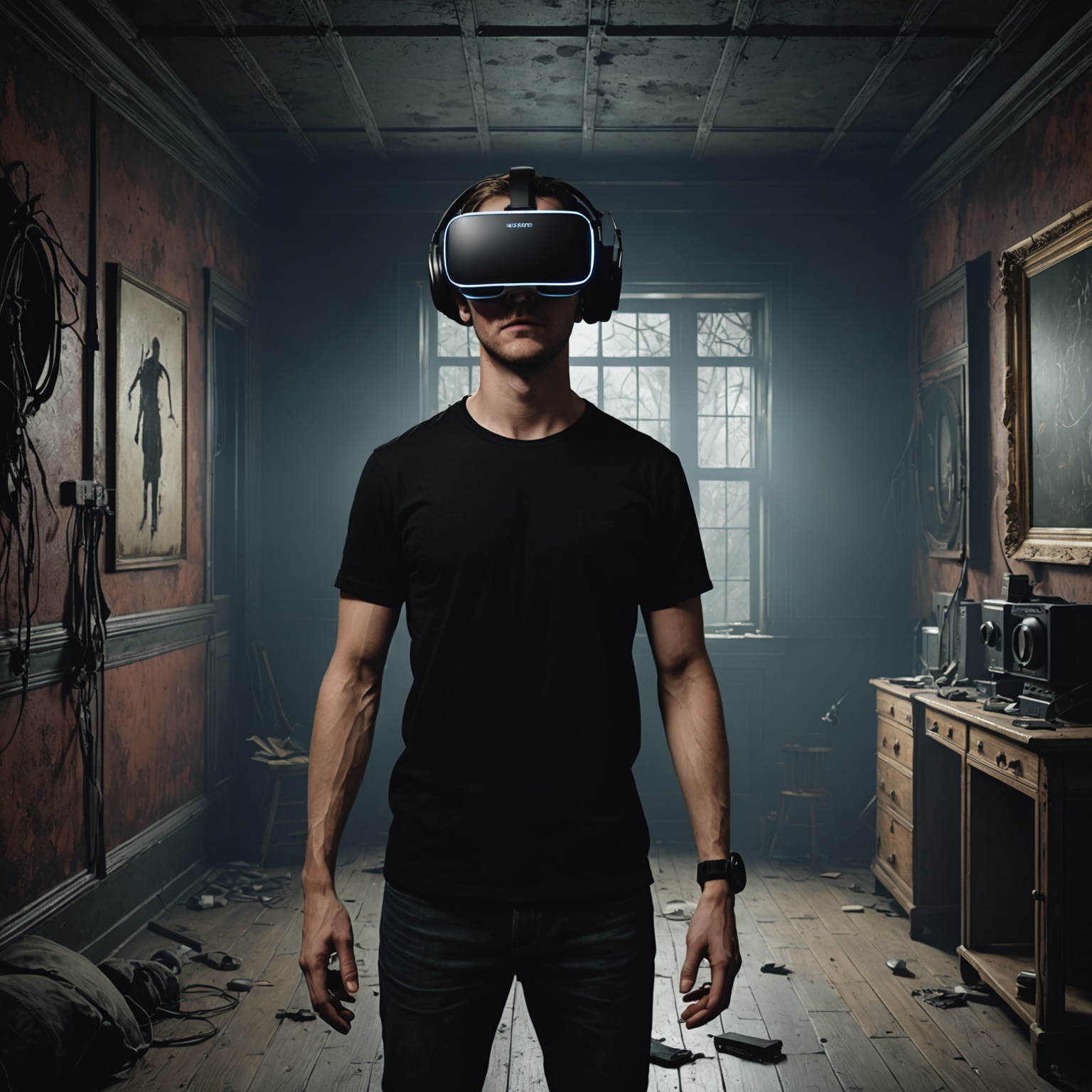The advent of virtual reality (VR) technology has been a game-changer for the gaming industry, bringing with it immersive gameplay experiences that were once only possible in the wildest of imaginations. Among the various genres of VR games, horror games have gained a dedicated following, with players finding thrills in the fear-inducing environments that these games create. But, all the graphics and gameplay mechanics would fall short without the multi-sensory experiences, especially the haptic feedback, that keeps the players on edge.
The Role of Haptic Feedback in VR Games
Haptic feedback is the use of the sense of touch in a user interface design to provide information to an end-user. For VR horror games, haptic feedback provides a sensory enhancement that takes the immersion into the game environment to another level.
Sujet a lire : How can AI-driven character models enhance the realism of combat in action games?
This technology goes beyond the simple vibration response in a controller to simulate the feeling of touch, pressure, and even temperature. It aims to mimic the physical world within the virtual environment, giving players a unique perspective on their gaming experience.
Imagine walking through a haunted house in a virtual reality horror game. The eerie sound of a creaking door sends shivers down your spine, but what if you can also feel the cold breeze that enters the room, or the prickling sensation of a ghostly figure brushing past you? Haptic feedback can create such experiences, adding an extra layer of realism that amplifies the horror experience.
A lire également : How can developers ensure ethical use of AI-generated content in video games?
Designing Immersive User Experiences with Haptic Feedback
The integration of haptic feedback into VR horror games requires careful design and planning. It is not just about creating the most realistic experiences but also about ensuring that the feedback is intuitive and enhances the overall gameplay.
Sound design plays an integral part in this process. Often, audio cues are used in conjunction with haptic feedback to give users a more holistic sensory experience. For instance, the sound of a heart beating faster can be complemented by the controller vibrating in rhythm, making the players feel their character’s fear and panic.
The type of haptic feedback used will also depend on the nature of the game. A subtle vibration can signal the presence of a hidden ghost in the room, while a stronger force feedback can simulate a direct attack from a monstrous creature.
The Technology Behind Haptic Feedback
There are various types of haptic technologies that can be used to create these immersive experiences. At its simplest, haptic feedback can be delivered through vibration motors present in the VR controller or headset. More advanced systems may use electrostatic or ultrasound technology to create a more nuanced range of tactile sensations.
One promising technology is the use of haptic suits which offer a full-body sensory experience. These suits are equipped with a network of sensors and actuators that can simulate everything from the sensation of a light touch to the impact of a punch. This technology can take the horror experience to a whole new level, making players feel as if they are truly in the midst of the horrifying scenarios.
The Future of Haptic Feedback in VR Horror Games
As technology continues to advance, the possibilities for haptic feedback in VR horror games are seemingly endless. Developers are continually exploring new ways to make the virtual experiences more realistic and immersive.
In the future, we might see the development of haptic gloves that can simulate the sensation of different textures or temperatures, allowing players to physically feel the objects in the game. Or perhaps, even the creation of a fully immersive VR room, equipped with 4D environmental effects like wind and temperature changes.
The integration of haptic feedback into VR horror games is an exciting frontier in the gaming industry. By leveraging this technology, game developers have the opportunity to offer users an unparalleled gaming experience that fully engages their senses, making the game not just something they play, but something they live. The more the line between the game and reality blurs, the more intense and thrilling the horror experience will be.
The Impact of Haptic Feedback on Player Experience
One of the crucial aspects of implementing haptic feedback in virtual reality horror games is to consider the impact it has on the player’s experience. A well-designed haptic feedback interaction can increase the player’s sense of presence in the virtual environment, leading to a more immersive and engaging gameplay experience.
The sense of presence is the psychological state where the user feels as if they are "in" the game world rather than merely observing it from an external perspective. It is the crucial factor in VR horror games, as it is the immersive experience that keeps the players hooked and engaged, even in face of horrifying scenarios.
Haptic feedback enhances the sense of presence by making the virtual environment tangible. When players can feel the cold breeze in a haunted house or the touch of a ghostly figure, they feel more connected to the game world, increasing their immersion and emotional involvement in the gameplay.
Moreover, haptic feedback can influence player behavior and strategic decisions. For example, the sensation of a monster’s breath on the back of the neck can make players feel threatened, causing them to react instinctively and make quick decisions, just like they would in a real-life situation. This real-time reaction strengthens the player’s immersion and makes the horror experience more intense.
Integrating Spatial Audio and Haptic Feedback
The combination of spatial audio and haptic feedback is a potent tool for enhancing user immersion in VR horror games. Spatial audio refers to the method of creating a three-dimensional sound environment that mimics the way we hear sounds in the real world. When combined with haptic feedback, it can create a highly immersive sensory experience.
Imagine hearing a ghostly whisper in your ear, accompanied by a gentle, eerie breeze that you can feel on your skin. Or hearing the sound of your own heartbeat, pounding in sync with the vibration of the controller in your hands. These audio-haptic combinations can trigger a visceral, emotional response, making the horror experience intensely real and terrifying.
When designing such experiences, game designers need to ensure a high level of synchronization between audio and haptic cues. The timing, intensity, and location of the haptic feedback need to align perfectly with the spatial audio to create a convincing and immersive experience.
Moreover, integrating spatial audio and haptic feedback can help players navigate the virtual environment and anticipate threats. For instance, the sound of a creaking door combined with a cold draft can alert players to a danger lurking nearby.
The integration of haptic feedback in VR horror games is a testament to the rapid growth and potential of the gaming industry. With the continuous advancement of haptic technology, the future holds immense possibilities for creating even more immersive and engaging virtual worlds.
Imagine a future where VR games are not just confined to visual and audio experiences, but also provide a full range of sensory feedback. Players could feel the heat of a virtual fire, the texture of a haunted mansion’s walls, or even the pain of a monster’s attack.
Such advancements could blur the lines between the real and virtual worlds, providing players with a deeply immersive and interactive experience that goes beyond traditional video games. As the technology continues to evolve, haptic feedback can potentially redefine the way we experience, interact with, and perceive the world of VR horror games.
In the end, the ultimate goal of integrating haptic feedback into VR horror games is to create immersive, engaging, and terrifying experiences that make players feel truly a part of the virtual worlds they explore. The future of the gaming industry lies in its ability to leverage this technology and provide players with a unique and unforgettable gaming experience.











